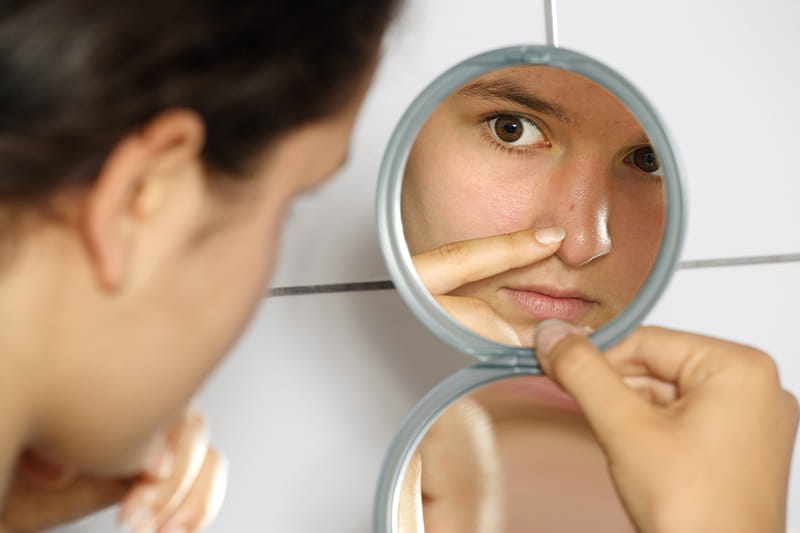EADV 2024: Spironolactone: A Place in the Algorithm of Adult Female Acne
Speaker: Brigitte Dreno
Spironolactone, a synthetic 17-lactone steroid, acts as an aldosterone receptor antagonist by competitively binding to the mineralocorticoid receptor, functioning as a potassium-sparing diuretic. Its primary use in the management of acne, particularly in the U.S. since the 1980s, stems from its antiandrogenic properties. The main target of spironolactone in acne treatment is sebocytes, where it competitively inhibits the binding of testosterone and dihydrotestosterone (DHT) to androgen receptors in the skin. Additionally, spironolactone may inhibit 5-alpha reductase and increase steroid hormone-binding globulin, further reducing androgen activity. Another mechanism by which spironolactone influences acne is its ability to decrease the synthesis of androgen precursors.
Clinical studies have shown that low doses of spironolactone, ranging from 50 to 150 mg daily, effectively reduce acne symptoms, especially when taken with food to enhance absorption. Research has shown that spironolactone performs well in treating acne on the back, with 56% improvement on the face and 68% on the back, highlighting its effectiveness in body acne. Side effects such as gynecomastia and menstrual irregularities are infrequent, affecting less than 20% of patients. A 2017 study identified specific female profiles that respond well to spironolactone, with a success rate of 71%, including 60% of women who had failed isotretinoin treatment. Predictive factors of positive response include the absence of contraception with intrinsic androgenic activity and the presence of inflammatory lesions at baseline. In cases of isotretinoin relapse, spironolactone has shown efficacy. The median response time for spironolactone treatment is approximately six months.
Retrospective data from a four-year study, involving over 300 patient years, revealed that 86% of patients improved with spironolactone therapy at doses of 50 to 100 mg daily. Treatment with spironolactone was effective both as monotherapy and in combination with other topical or oral treatments. Despite its widespread use for over 30 years in countries like the U.S., spironolactone has not yet received official labeling for acne treatment, largely due to a lack of high-quality randomized controlled trials (RCTs). Systematic reviews published in 2017 concluded that while there is evidence supporting the use of spironolactone in acne, more robust, randomized trials are needed to establish definitive conclusions.
Regarding side effects, dropout rates due to adverse events were low in both clinical trials and case studies. Higher doses, such as 200 mg daily, were associated with more side effects compared to lower doses typically used for acne (50-150 mg daily). The most common side effect, menstrual irregularity, can be mitigated by the concurrent use of third- and fourth-generation oral contraceptives, further improving patient adherence to the therapy. Despite these challenges, expert consensus continues to support the use of spironolactone in acne management until higher-quality evidence becomes available.
A comprehensive study involving 974 women concluded that routine serum potassium monitoring in healthy women using spironolactone for acne treatment is unnecessary. This conclusion was corroborated by a systematic review in 2017, which examined 469 women and identified only 14 cases of elevated potassium levels, all of which were deemed clinically insignificant. Occasional potassium testing is advised on a case-by-case basis, especially when specific risk factors are present. Other side effects associated with spironolactone, such as nausea, fatigue, and hypotension, are generally mild and rare. Monitoring for these effects can be considered age-dependent, as the incidence of hyperkalemia is higher in older women. A retrospective study of 124 women with acne showed that the risk of hyperkalemia was more significant in women aged between 46 and 65, but overall, hyperkalemia does not appear to be a major concern in managing spironolactone treatment for acne.
Additionally, concerns about the thromboembolic risks associated with spironolactone were dispelled by recent data. A large, retrospective, matched cohort study comparing patients treated with spironolactone to those on tetracycline for acne found no increased risk of venous thromboembolism (VTE), deep vein thrombosis (DVT), or pulmonary embolism (PE) in those using spironolactone. Furthermore, spironolactone has shown no increased risk of breast or gynecologic malignancies in women using it for dermatologic conditions. Women taking spironolactone for acne, hair loss, or arthritis, who are at low risk of breast or gynecologic cancers, may follow standard gynecologic check-ups without the need for more frequent monitoring than the general population. Regarding hypotension, a single-center retrospective study revealed a minimal rate (0.26%) of patients requiring a therapy change due to hypotension. No significant changes in systolic or diastolic blood pressure were observed across different spironolactone doses (25–200 mg daily).
Given this strong safety profile, spironolactone is particularly indicated for adult women with mandibular acne, hyperseborrhea, inflammatory lesions, closed comedones, and peripheral hyperandrogenism. Additional indications include acne on the trunk, failure of isotretinoin therapy, and cases where isotretinoin is contraindicated due to depressive tendencies or difficulty in compliance with contraceptive measures. The distinction between peripheral and central hyperandrogenism is crucial, as spironolactone specifically targets peripheral hyperandrogenism, often characterized by signs like irregular periods, dilated pores, and hyperseborrhea. The effectiveness of spironolactone in treating adult female acne was further confirmed in a multicenter, randomized, double-blind, placebo-controlled study by Allison Lesson and her team. In this study, women with facial acne for over six months were treated with low doses of spironolactone (starting at 50 mg and increased to 100 mg after six weeks if tolerated) for 24 weeks. The primary endpoint was acne quality of life at week 12, and the study revealed significant improvements, validating spironolactone's role as a safe and effective treatment for adult female acne.
In 2024, a clinical trial was conducted to compare the efficacy of doxycycline and spironolactone in the treatment of acne. This was a randomized double-blind trial, lasting for six months, followed by an open-label phase for another six months of follow-up. In one arm, patients received doxycycline combined with 5% benzoyl peroxide for three months, followed by placebo with benzoyl peroxide. This approach was used because, in France, the official labeling requires that doxycycline be discontinued after three months. In the other arm, spironolactone 150 mg was administered, also in combination with benzoyl peroxide. The blinding of the treatment was maintained for the first six months, and for those who achieved success at six months, the same treatment was continued. The trial focused on women, stratified by contraception, to assess if the type of contraception influenced the treatment outcomes. The main objective was to demonstrate the superior efficacy of spironolactone over doxycycline, while the secondary objectives included other factors such as safety and patient-reported outcomes. The selection criteria were standard for this type of trial, and the scoring system used was a combination of the global facial score (AFAS 1) and a score specifically for mandibular lesions (AFAS 2).
The results indicated that spironolactone was 1.37 times more effective than doxycycline at four months, with the difference becoming even more significant by six months. The study included stratification randomization based on contraception, with no significant differences in outcomes related to the type of contraception used. Multivariate logistic regression revealed a near-significant association between family history and treatment success. There was no difference in the outcomes between the per-protocol and intention-to-treat analyses. Adverse events were minimal, with dysmenorrhea being the most frequently reported. Inflammatory and non-inflammatory lesion counts, as well as quality of life scores, showed significant improvement, particularly with spironolactone, which demonstrated a more gradual yet sustained effect compared to doxycycline. The AFAST (Adult Female Acne Scoring Tool) scores (AFAS 1 and AFAS 2) and the trunk score also showed significant improvement with spironolactone. In conclusion, this double-blind clinical trial demonstrated the superiority of spironolactone over doxycycline for acne treatment, with good clinical outcomes and minimal adverse effects. Despite spironolactone not having marketing authorization for acne treatment in the United States or Europe, it presents a valuable alternative to isotretinoin, especially in cases involving relapse or peripheral hyperandrogenism. However, in prepubertal acne, the results are less favorable, and the treatment often needs to be combined with topical therapies due to the delayed onset of action. The study further highlighted spironolactone's effectiveness in managing hyperseborrhea when combined with local treatment and its targeted action in acne with signs of peripheral hyperandrogenism.
In recent trials, evidence has demonstrated the efficacy of spironolactone in the treatment of acne. Future guidelines are expected to incorporate spironolactone based on this emerging data. In clinical trials, combining spironolactone with both topical and oral treatments leads to improved outcomes. Current guidelines suggest that a fixed combination is most effective when well-tolerated. The impact of spironolactone on hyperseborrhea is significant, and when combined with fixed therapies targeting atrophic scars, it provides a strong therapeutic option. Questions were also raised regarding the appropriate dosing of spironolactone, particularly whether the commonly used 50-100 mg daily dose is sufficient, and if the endpoint of 16 weeks is too early to assess full efficacy. Evidence suggests that increasing the dose beyond 120 mg is unnecessary, with most patients responding well to 75-100 mg daily. Spironolactone can be used for up to 8 to 12 months, though most patients achieve complete or near-complete remission by six months.
33, European Academy of Dermatology and Venereology Congress, 25-28 September 2024, Amsterdam



